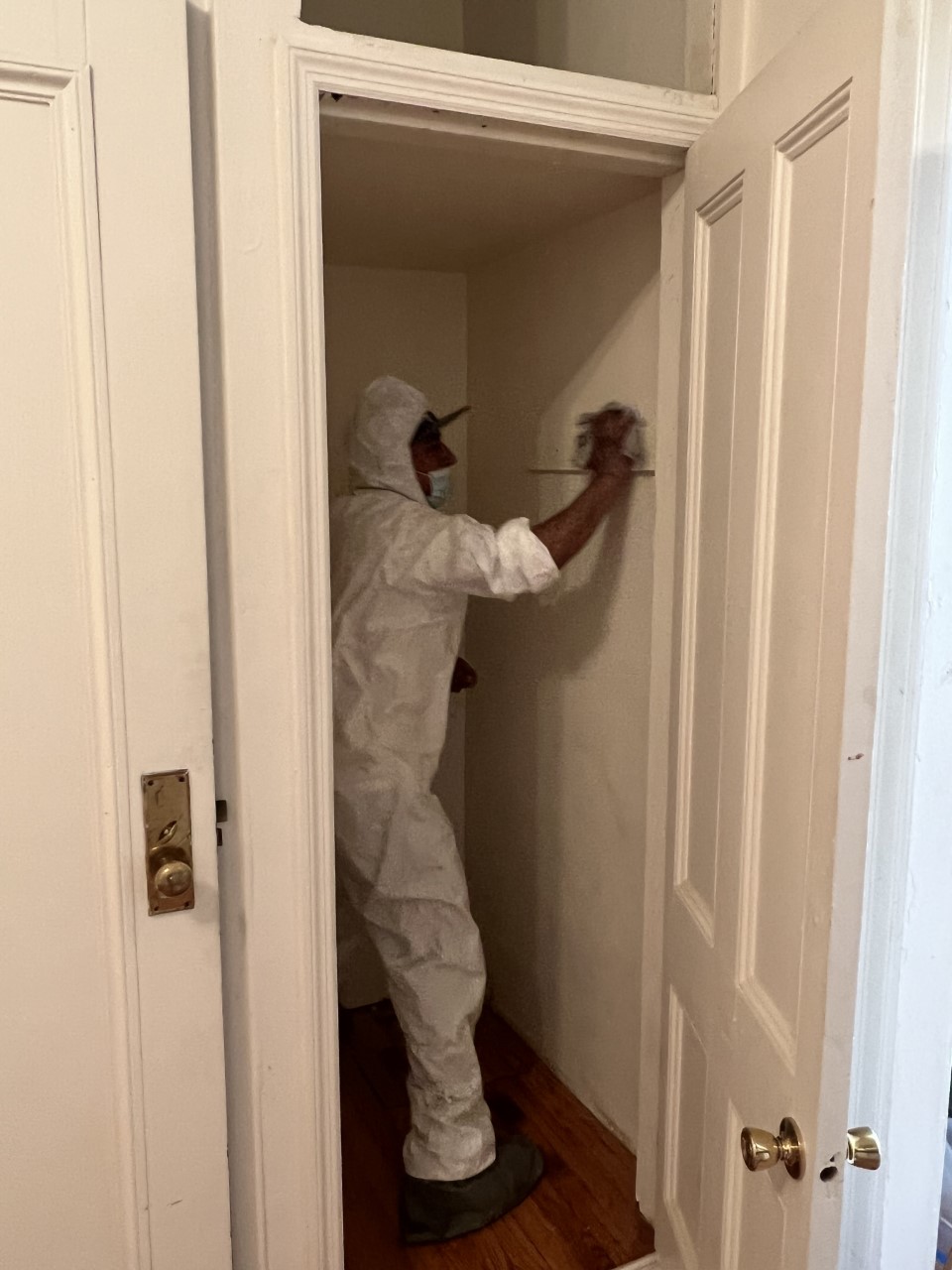Lead Paint Removal Service-- NYC's Trusted Solutions for Lead Safety And Security
Comprehensive Overview on Effective Lead Violation Elimination Techniques
In the realm of ecological safety and security, dealing with lead offenses demands a careful and structured technique. This extensive overview starts by highlighting the vital first actions of recognizing lead risks with sophisticated analysis and screening approaches. Techniques such as XRF analysis and dust wipe tasting are vital in determining contamination resources. In addition, the overview clarifies on the value of sticking to strict security procedures during the removal procedure, consisting of the usage of appropriate PPE and isolating impacted areas (Lead Paint Removal Company). The subsequent sections assure to go over post-removal verification and preventive approaches, making certain long-lasting safety and conformity. Discover the detailed information that make these methods not simply efficient but essential.
Determining Lead Threats
Determining lead hazards is a critical primary step in reducing the threats connected with lead exposure. Lead, a poisonous steel, can be existing in various environmental tools, consisting of paint, soil, water, and dirt. It postures severe wellness risks, especially to youngsters and pregnant ladies, causing neurological damage and developmental hold-ups. Exact recognition of potential lead sources is necessary for effective remediation.
The initial phase in determining lead dangers includes comprehending usual lead resources within the developed setting. Frameworks built prior to 1978 are specifically at risk as a result of the widespread usage of lead-based paint throughout that period. Furthermore, dirt contamination can take place from wearing away outside paint, commercial discharges, or historical use of leaded gasoline.
An additional significant resource is lead piping and pipes components, which can leach introduce alcohol consumption water. Customer products such as toys, ceramics, and imported items might likewise include dangerous lead levels. Notably, occupational settings and pastimes involving lead can track contaminants right into homes.
Evaluation and Testing
When addressing lead threats, efficient assessment and screening are vital. This essential step makes certain the recognition and quantification of lead visibility, thus guiding succeeding remediation initiatives. Preliminary evaluation generally entails a visual inspection to determine potential lead resources, such as weakening paint or infected dust. This is complemented by even more rigorous testing methodologies to identify the extent of contamination.

Dust clean tasting is an additional crucial method, specifically in domestic setups. By accumulating samples from floors, windowsills, and other surfaces, this technique supplies understandings right into potential exposure threats. Furthermore, soil testing around building boundaries is vital to discover lead contamination that can posture dangers, particularly to children.
Safe Removal Treatments
Upon finishing comprehensive assessment and testing, carrying out secure elimination procedures my website is the next vital phase in addressing lead hazards. This procedure makes certain that lead-contaminated materials are effectively and securely gotten rid of, lessening danger to both workers and residents. The primary step includes isolating the affected area making use of plastic sheet and appropriate sealing strategies to stop the spread of lead dust.
Workers have to put on suitable personal safety devices (PPE), including respirators, handwear covers, and non reusable coveralls, to reduce direct exposure. Utilizing specialized tools and damp techniques, such as wet fining sand or utilizing HEPA-filtered vacuums, lowers the diffusion of lead particles. It is critical to prevent dry sanding or unpleasant blasting, as these techniques can create dangerous lead dust.
Garbage disposal is another essential element; all polluted materials need to be securely gotten and labeled according to EPA and neighborhood regulations. In addition, extensive cleansing of the workspace with HEPA vacuums and wet cleaning guarantees the elimination of more info here residual lead fragments.
Post-Removal Verification

Verification of effective lead elimination, recognized as post-removal confirmation, is vital to make sure the safety and security and habitability of the remediated location. This examination guarantees that all recognized sources of lead have been attended to and that no visible indications of contamination stay.
Complying with the visual evaluation, environmental sampling is conducted. This involves accumulating dirt, dirt, and often water samples from the remediated area. Accredited laboratories analyze these samples to gauge lead degrees, ensuring they fall listed below the security thresholds developed by governing bodies such as the Epa (EPA)
In addition, air top quality screening may be performed to detect air-borne lead bits, especially in article source cases where extensive lead-based paint elimination or improvement has occurred. The outcomes of these tests provide measurable data validating that the lead levels are within permitted restrictions.
Eventually, post-removal verification functions as an essential checkpoint, verifying the effectiveness of the lead reduction efforts and guarding the health and wellness of occupants and site visitors.
Safety Nets and Upkeep

A vital preventative action includes the usage of lead-safe certified service providers for any improvement, repair work, or paint activities. These professionals are learnt techniques that lessen lead dust and particles. Additionally, preserving colored surfaces to avoid breaking or peeling is vital, as weakening paint can launch lead fragments into the environment.
Educational initiatives targeting property owners and tenants concerning the dangers of lead and the importance of reporting any type of possible dangers can additionally enhance preventative efforts. Routine cleansing using HEPA vacuums and wet mopping methods can dramatically reduce lead dust buildup.
Conclusion
In summary, efficient lead infraction elimination requires a thorough approach encompassing extensive evaluation, exact screening, and rigid elimination treatments. Making sure safety and security via proper isolation and personal protective equipment remains paramount. Post-removal verification via environmental tasting and air top quality screening confirms conformity with well established security requirements. Additionally, ongoing inspections and upkeep are important to minimize future lead threats, consequently securing public health and wellness and guaranteeing sustained conformity with regulative demands.